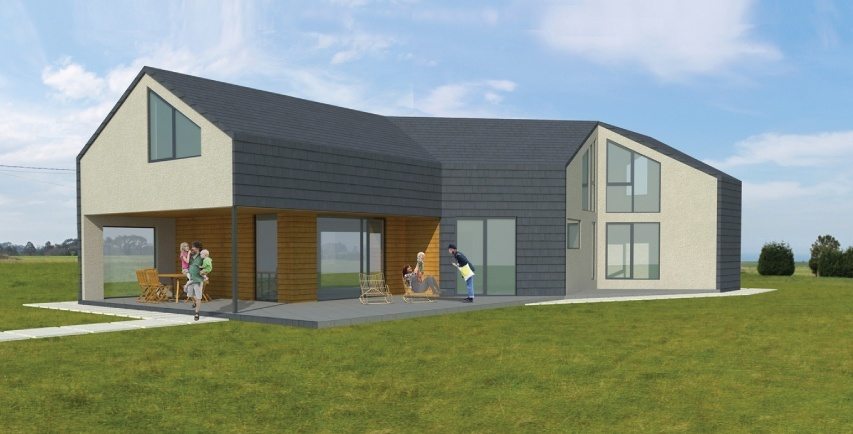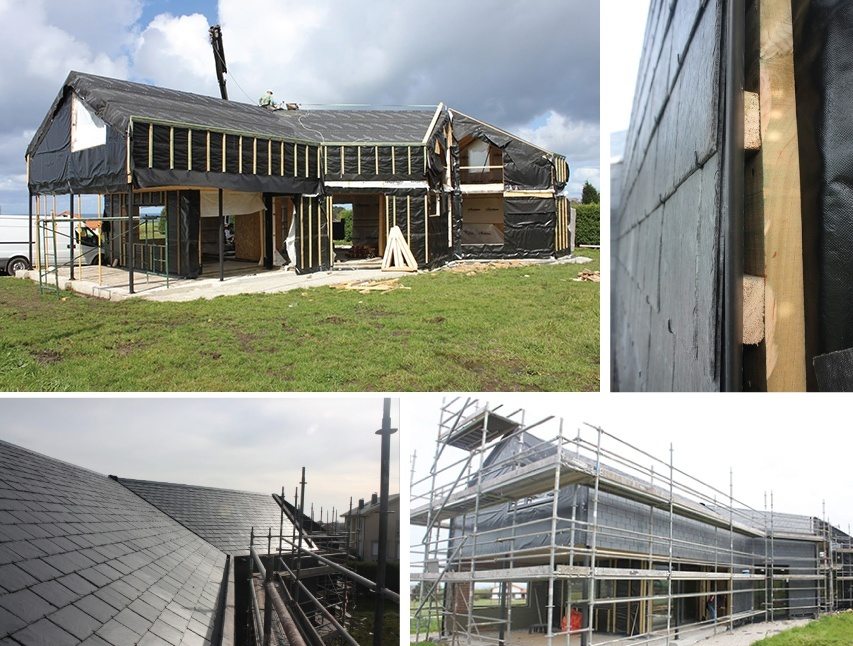What Is a Passive House?
“Maximize your gains, minimize your losses” is the unofficial slogan of the passive building approach. The aim of a passive building is to “attain a quantifiable and rigorous level of energy efficiency” without sacrificing the comfort afforded by heating and cooling systems. The standards of the Passivhaus certification strategically use the building’s architecture to make an air-tight, highly efficient building that drastically cuts a homeowner’s energy costs and lowers environmental impact. To reach this energy-saving goal, these structures are modeled following 5 building-science principles:
- Employing continuous insulation through its entire envelope without any thermal bridging.
- The building envelope is extremely airtight, preventing infiltration of outside air and loss of conditioned air.
- It employs high-performance windows (typically triple-paned) and doors.
- It uses some form of balanced heat-and moisture-recovery ventilation and uses a minimal space conditioning system.
- Managing solar gain to exploit the sun’s energy for heating purposes and to minimize it in cooling seasons.
Far from making a sacrifice for lower energy consumption, well-built passive homes are noted for comfortably maintaining a stable internal temperature through all seasons, having excellent air quality, and being extremely durable buildings due to quality of building materials.
Quality Materials Matter

Photo by DUQUEYZAMORA Architects
The success of an efficient, sturdy passive building relies on the materials used in the project. This family home in Asturias, Spain, is being built using natural slate roofing and slate tile facade. Not only does using slate tile as both siding and roofing give this building a modern, regal appearance, but it is an economical choice that embraces using environmentally-friendly materials.

Photo by DUQUEYZAMORA Architects
Natural slate requires only the process of extracting and shaping, whereas other popular building materials need additional treatment. These treatments use large amounts of water and energy, and release harmful CO2 emissions.
Slate roofing and siding is also an incredibly durable, resistant material, with a lifespan of 100+ years and zero maintenance once installed. Naturally water resistant and fireproof, the hard stone is prepared for the challenges of any element. Its unfading property ensures enduring quality of appearance through its long life.
Below you can see a stand-alone home that has been designed with the goal of becoming a Near Zero Energy home. This, too, has used natural slate roofing and siding tiles.
For a list of why slate cladding systems would be good for your project, click here.
Information on passive buildings taken from Phius.org.
